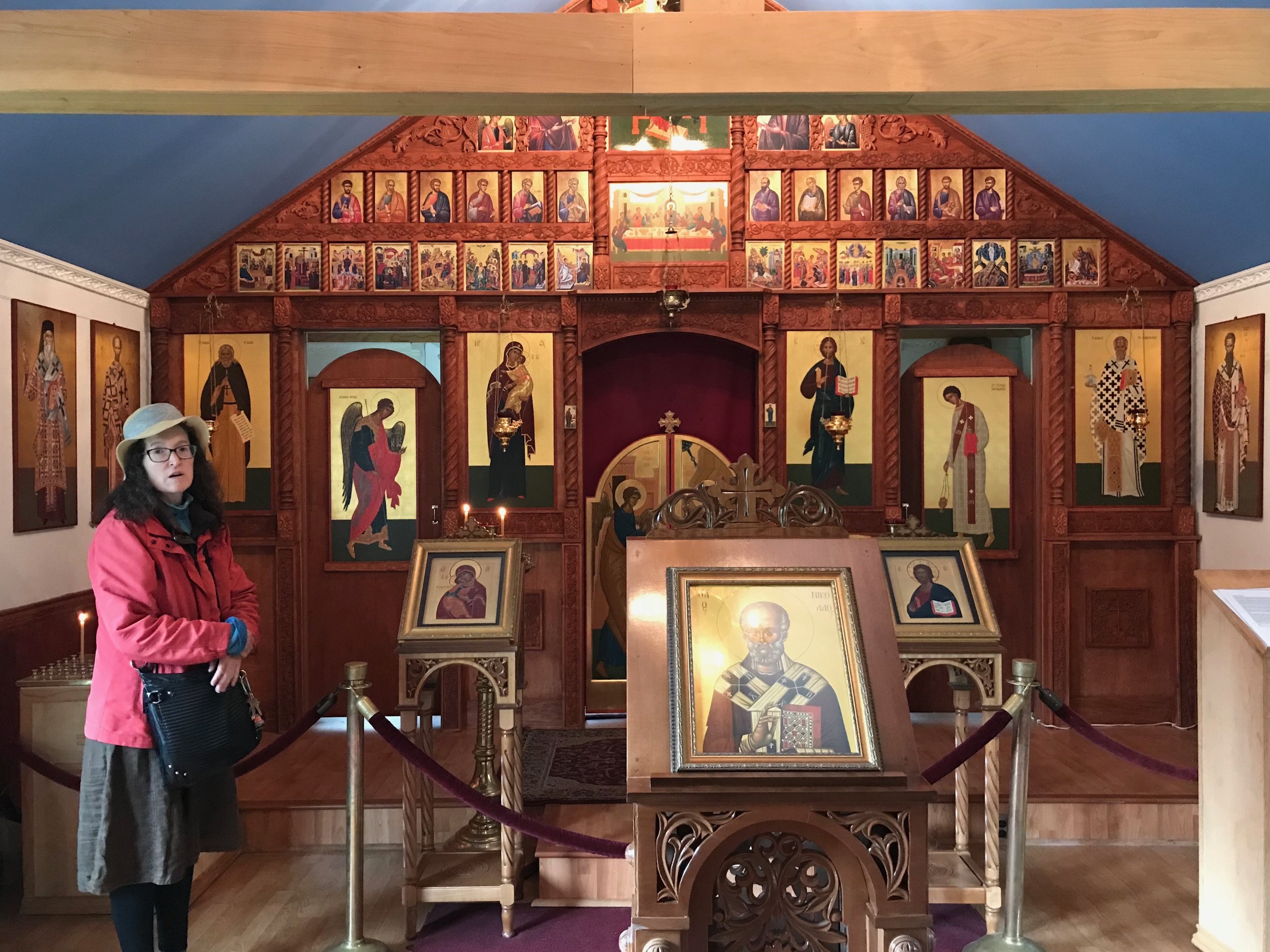Alaska: Russians, Americans and 229 tribes
By Rick Holmes
September 21, 2018
Eklutna, Alaska - It’s a small cemetery in a state indescribably vast, and it tells a story about this place few Americans have visited.
The graveyard sits behind St. Nicholas Church, built by the Russian Orthodox missionaries who were among the first Europeans to enter interior Alaska. There are no headstones on the graves. Instead, they are marked by small wooden houses, decorated with Russian Orthodox crosses, in all states of decay. “Spirit houses,” they are called, and they were a tradition among the Dena’ina Athabaskans centuries before the Europeans arrived. The Athabaskans believed the spirits of the dead lingered on earth for a year while their families mourned, a guide explains. The spirit houses were their temporary home, and as the houses gradually returned to the earth, the spirits moved on.
Unlike some other missionaries, the Russian Orthodox tried to accommodate, rather than erase, Alaska Native customs. In Eklutna, they brought the burial practices of their converts in line with Christian teachings, but they added the spirit houses to the local Russian Orthodox traditions.
The congregation at St. Nicholas is small, with the church used mainly on holidays. But there are Russian villages in Alaska of a more recent vintage, founded by religious refugees from the Soviet Union, known as “Russian Old Believer Communities.” And the Eklutna graveyard is still active, with new spirit houses joining the old, their colors signifying the family of the deceased.
The Russian fur traders weren’t as accommodating to the Natives as the missionaries. Russians – and later Americans – forced Natives to leave their homes to hunt sea otter, leaving their families to fend for themselves. Natives resisted, but they had no defense against the deadly infections carried by the Europeans, which decimated the indigenous population. As much as two-thirds of Native populations in some regions were killed by smallpox, typhus and other diseases for which they had no immunity.
The United States purchased Alaska from the Russian Empire in 1867 for the tidy sum of $7.2 million. Secretary of State William Seward negotiated the deal, which was ridiculed by critics as “Seward’s folly.” Grateful Alaskans named a city on the coast after Seward, and a spectacular highway that takes you between there and Anchorage, passing glaciers, Dall sheep and beluga whales along the way. Seward Highway ought to be on every motorist’s bucket list.
The Americans’ treatment of the Alaskan Natives was at least as harsh as the Russians’. The cavalry was never called in, but the U.S. government waged war on Native culture here, just as in the Lower 48. Native children were forced into schools where their language and customs were banned in order to “civilize” them. Adults had their land taken, their rights denied.
Native Alaskans won their most important battles in the courts. A lawsuit brought by Native activists won them right to vote in 1922. Other suits established Native ownership of their lands. And when oil was discovered on the North Slope and a pipeline had to be stretched from one end of the state to the other, across thousands of acres of Indian land, Natives had leverage and a seat at the table. Instead of negotiating treaties with each of Alaska’s 229 federally-recognized “tribal entities,” Congress in 1971 passed the Alaska Native Claims Settlement Act. It gave Natives $963 million and the rights to 44 million acres. Twelve regional corporations were created to manage the land and money, which are now among the state’s most profitable enterprises.
While traditional tribes and customs remain, the ANCS corporations completed an economic assimilation. For thousands of years, Alaska Natives thrived in a sustainable, subsistence economy. They used every part of the animals they hunted, taking no more than they needed. They let some salmon escape so they could spawn. The ANCS corporations made them capitalists, partners in resource extraction, receivers of dividends.
The Europeans brought an economy based on maximal exploitation of resources, one prone to booms and busts. Sea otters, seals and whales were hunted to the brink of extinction. Alaska had a gold rush, a copper rush and an oil rush. The oil is still rushing, and political leaders are now pushing for a new pipeline to get its abundant natural gas to global markets.
Alaska is a big state, bigger than you probably think. Mapmakers tend to put Alaska in a corner to save space, out of scale with the contiguous states. In reality, it’s more than twice as big as Texas. That’s large enough for eons of history, multiple cultural threads and countless natural wonders, more than enough for any traveler’s bucket list.
Rick Holmes can be reached at rick@rickholmes.net. You can follow his journey at www.rickholmes.net. Like him on Facebook at Holmes & Co, on follow him on Twitter @HolmesAndCo.



